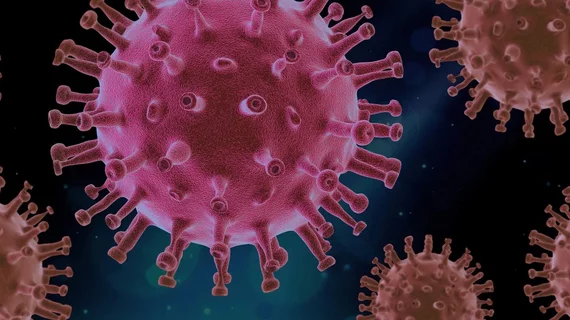Children with COVID-19 often have negative chest CT findings, study shows
More often than not, chest CT findings are negative in pediatric patients with lab-confirmed COVID-19, researchers reported May 26 in the American Journal of Roentgenology.
In a subset of children with positive imaging findings, however, bilateral and lower lobe-predominant ground-glass opacities are common. Doctors led by a team from the Icahn School of Medicine at Mount Sinai examined CT scans and symptoms of 30 children for their study, and also found a correlation between increasing age and more severe lung problems.
First author Sharon Steinberger, MD, with Sinai’s Department of Diagnostic, Molecular, and Interventional Radiology, and colleagues say many of their takeaways align with prior reports of COVID-19 in adult and pediatric populations, but pointed out their larger sample size as a strong point.
“To our knowledge,” Steinberger added in the study, “this case series is the largest series to date that describes the imaging findings of pediatric patients with COVID-19.”
All children in the present study were diagnosed with the virus via real-time polymerase chain-reaction lab testing at one of six centers in China from Jan. 23 to Feb. 8. They ranged in age from 10 months to 18 years, while two cardiothoracic radiologists and one cardiothoracic imaging fellow reviewed all lung scans.
Among the 30 children, 77% of all CT findings proved to be negative. Positive abnormalities included ground-glass opacities with a peripheral lung distribution, a crazy-paving pattern, and the halo and reverse halo signs. Steinberger et al. also pointed out that all patients with positive findings had clinical symptoms, while only 61% of children with negative findings showed such signs.
The group also questioned the utility of using CT for these children, given that 11 of the group underwent a follow-up scan, but 91% of those exams showed no change.
Some have proposed using CT due to its consistently high sensitivity when compared to RT-PCR, but most medical societies currently do not recommend using the modality, the authors noted.
“The potential limitations of CT include its low positive predictive value in areas where the prevalence of COVID-19 is low and the lack of specificity of some CT findings that can be seen in association with other infections as well as other inflammatory diseases,” the authors wrote.
In cases that contain suspected complications associated with the virus, including superimposed infections and pulmonary emboli, CT may in fact help. Clinicians and technologists must take appropriate precautions in these instances, however, including wearing personal protective equipment, sanitizing scanners and exam rooms, and notifying staff.
A study undertaken by a separate team from Mount Sinai published earlier this month found that performing chest x-rays in younger adults who arrive in the emergency department with COVID-19 can help physicians determine who may need more immediate treatment.

